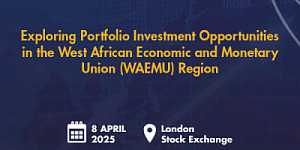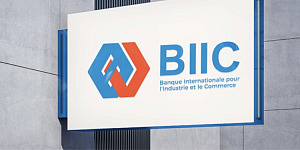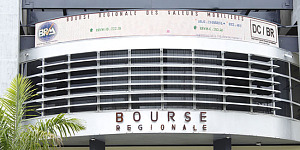Fitch Ratings has assigned Oragroup S.A. (Oragroup) a Long-Term Issuer Default Rating (IDR) of 'B-' with a Stable Outlook and a Viability Rating (VR) of 'b-'. A full list of ratings is provided below.
Key Rating Drivers
IDRS and VR
Oragroup is a Togo-based bank holding company (holdco), which operates a group of fully-fledged banking subsidiaries in 12 francophone African countries. The Long and Short-Term IDRs of Oragroup are driven by its intrinsic creditworthiness, as defined by the 'b-' VR. Oragroup's VR is assigned at the same level as the group VR as Fitch believes the holdco's failure risk is substantially the same as that of the group as a whole.
The Stable Outlook on the Long-Term IDR reflects our view that Oragroup has sufficient headroom at the current rating to absorb risks from operating-environment pressures, primarily to its capitalisation and asset quality. The Stable Outlook also considers remedial measures by the group to strengthen capitalisation and asset quality over the next 18-24 months.
Oragroup's VR is in line with the implied VR of 'b-' based on Fitch's Criteria Exposure Draft published on 17 August 2021.
The VR reflects the group's modest, albeit expanding, franchise, diversified business model and healthy funding and liquidity. It also considers weak asset quality, acceptable profitability and a vulnerable capital position.
Asset quality is a weakness due to a high impaired/IFRS 9 Stage 3 loans ratio of 21.5% at end-1H21 and modest total reserve coverage of 44%. At end-2020, around 40% of impaired loans came from a past acquisition and other legacy exposures.
We expect impaired loans to decline gradually over the next two years, owing to remedial actions being taken by the group (some are either already complete or nearing completion). Net loans account for only around 50% of total assets, with the balance mainly in liquid assets (sovereign securities and interbank placements), which underpins our overall assessment of asset quality.
Profitability metrics are acceptable in the low interest-rate environment in the WAEMU region. Margins are on the low side as a consequence of low rates and reliance on expensive time deposits, but this is compensated by solid non-interest revenue generation.
We view capitalisation as a key rating weakness. This primarily reflects very high capital encumbrance by unreserved Stage 3 loans as these represented 2.1x Oragroup's common equity Tier 1 (CET1) capital at end-1H21. Moreover, capital ratios have tight buffers over regulatory requirements. Oragroup's regulatory CET 1 ratio and total capital adequacy ratio were 8.1% and 11%, respectively, at end-1H21, compared with minimum regulatory requirements of 7.3% and 10.8%, respectively.
Oragroup's capital-raising plans are at a fairly advanced stage with preference shares and subordinated debt to be issued in 2022. This, combined with a potential recovery in profitability and risk-weighted asset (RWA)-optimisation initiatives should translate into stronger capitalisation and buffers, in our opinion.
Funding and liquidity are rating strengths. The funding base is dominated by local-currency customer deposits and low-cost current and savings accounts. Deposit concentration is modest. Due to ownership and franchise strengths, Oragroup raises market funding from development financial institutions (DFIs), some at concessional terms. Liquidity buffers are ample, underpinned by a large stock of sovereign securities and balances at central banks.
Double leverage of 123% at the holdco level at end-1H21 (end-2020: 129%) was above the 120% threshold at which Fitch would usually consider notching down the holdco's ratings from the group VR. Due to impending capital injections into three subsidiaries and no dividend upstreaming from subsidiaries, we expect double leverage to rise further by end-2021, and decline below 120% only by 2024.
Although double leverage is excessive, we do not notch down the holdco's VR from the group VR because i) the holdco continues to receive sufficient cash flows from subsidiaries in the form of fees and other payments, which reduces its reliance on up-streamed dividends and ii) the holdco's debt is predominantly in local currency with a large proportion owed to shareholders as well as other DFIs, thus limiting refinancing risks.



























































